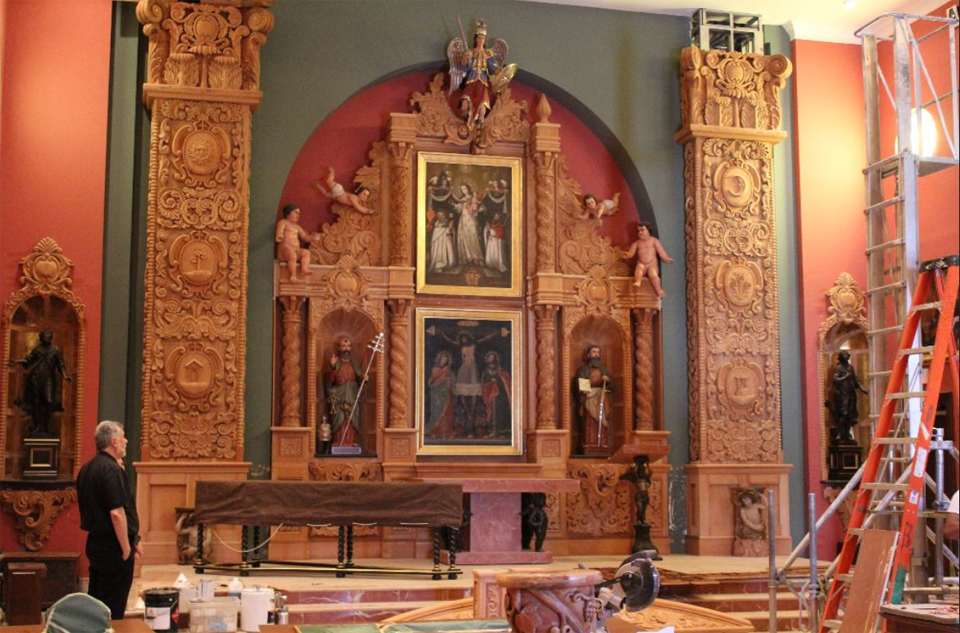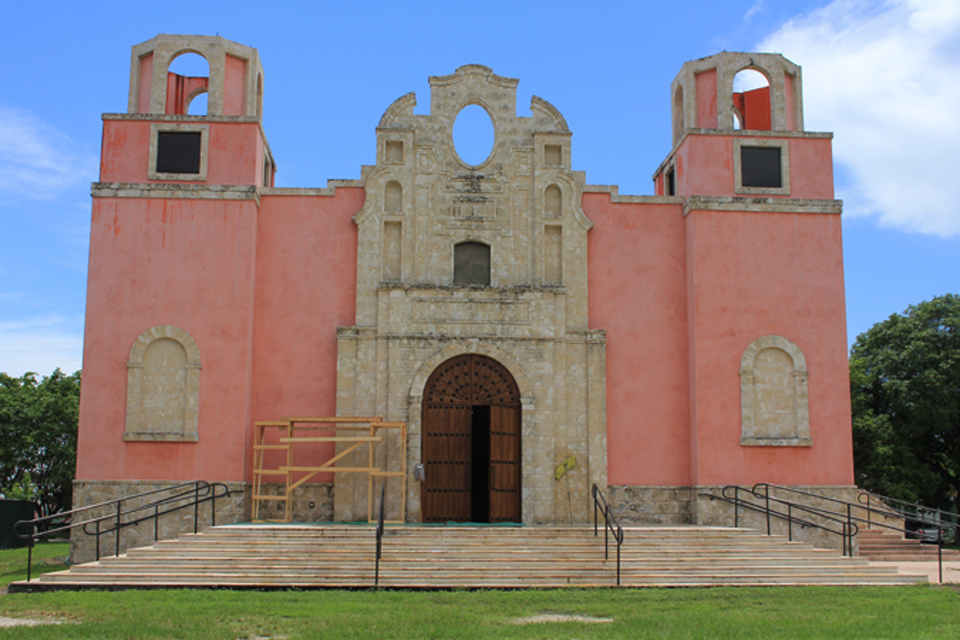The Chapel of La Merced


Father José Luis Menendez facing construction in the central chamber of La Merced. Photo: Juan Brizuela
In a neighborhood of empty storefronts and barred windows sits a treasure of beautiful architecture that is a gift to the surrounding under-served community. For over a decade at Corpus Christi Church in Miami, Father José Luis Menendez, the parish priest, has been collecting artworks from Latin America’s under-appreciated Colonial period and has constructed a replica of an old Peruvian chapel for their home. La Iglesia Museo Perú de Nuestra Señora de la Merced (the Virgin of Mercy) is the first part of the proposed Colonial Heritage Cultural and Convention Center. Built by local craftsmen in the style of the time period — with gilded ceilings and columns, intricately carved altars and statuary, and exquisite details — visitors see an old-world treasure that includes a collection of over 130 paintings and sculptures from Colonial Peru, Bolivia, Ecuador, Mexico, and Colombia, donated and purchased over the years.

La Iglesia Museo Perú de Nuestra Señora de la Merced (the Virgin of Mercy), Miami, Florida. Photo: Raymond Elman
The Chapel, which broke ground in 2005 and is in the final two years of finish work, is located on the grounds of the Corpus Christi Parish Church (founded in 1941) in Allapattah, the traditionally Dominican neighborhood in downtown Miami. The parishioners are mainly minorities: Hispanic, Latino, Dominican, Haitian, Cuban, 40% of whom live below the poverty line with median household incomes of $24,418. The work on the Chapel has been a labor of love with skilled laborers: carpenters, plasterers, painters, and artisans who have been trained by visiting experts from Peru and Bolivia to carve, gild, paint, and install the details of this replica of an Andean church. The Chapel is a group project for many in the parish community. From cleaning to building, serving to donating, members of Corpus Christi give vast amounts of their time to the project.
The collection of Colonial paintings and sculptures in the Chapel is among the largest in the United States and includes iconic works from the early days of Spanish rule that demonstrate the extraordinary artistry of the local craftsmen, many of them indigenous artists who had learned the traditions of gilding and carving from their ancestors. It was their attention to what was for them a new kind of artwork (indigenous peoples did not paint in oil on canvas or sculpt human figures) that resulted in a unique form of artwork created in the Americas for the new, recently converted Americans. Extraordinary gold stenciling marks the famous paintings of the Cuzco School and the realism of polychrome statuary, complete with silver ornaments and glass eyes, adds to the astonishing collection. As a professor in the Department of Art and Art History at Florida International University and a specialist in the arts of Latin America, I was asked to direct the curation of the collection.
The mission of the Chapel and Museum project is, in the words of Father Menendez, “to give back something to the United States that has been given to us. The United States has accepted us and given us a chance to build a new life. Just because our parishioners cannot afford to donate or visit museums does not mean that they do not deserve to live with art and culture, that their children should not benefit from a community reflecting their heritage and history, or that people from outside the neighborhood should not be able to visit a location often unfamiliar and learn from the experience.” A strong believer in the rejuvenating powers of arts and culture, Father Menendez has worked diligently to complete this project. The objective is to complete the chapel by the end of 2016 and make it a showcase of the city, joining the other new institutions that have transformed Miami into one of the most cosmopolitan cities in the United States. ♦


